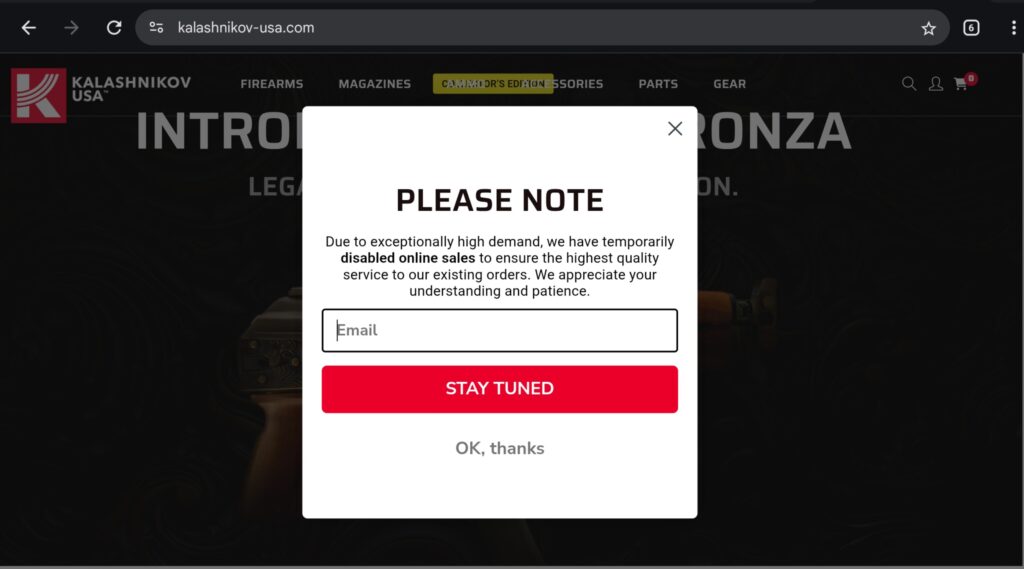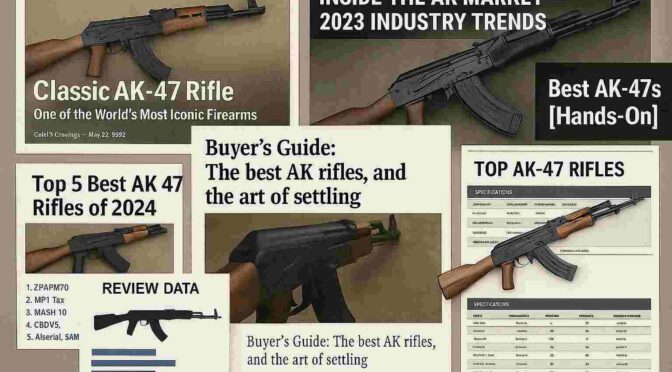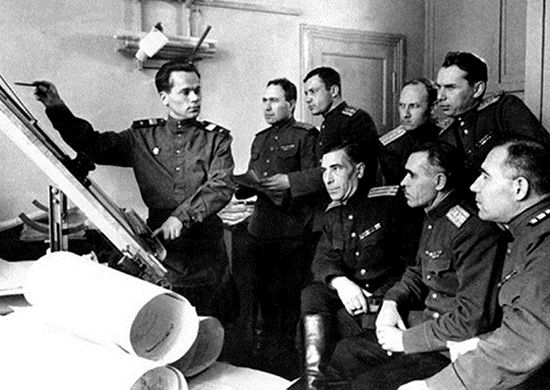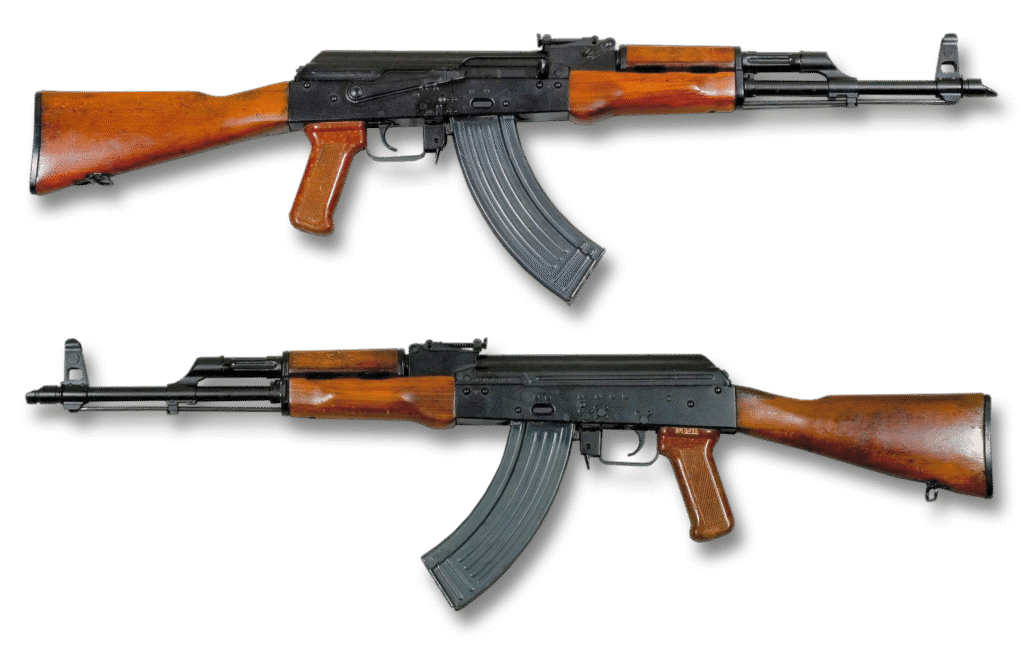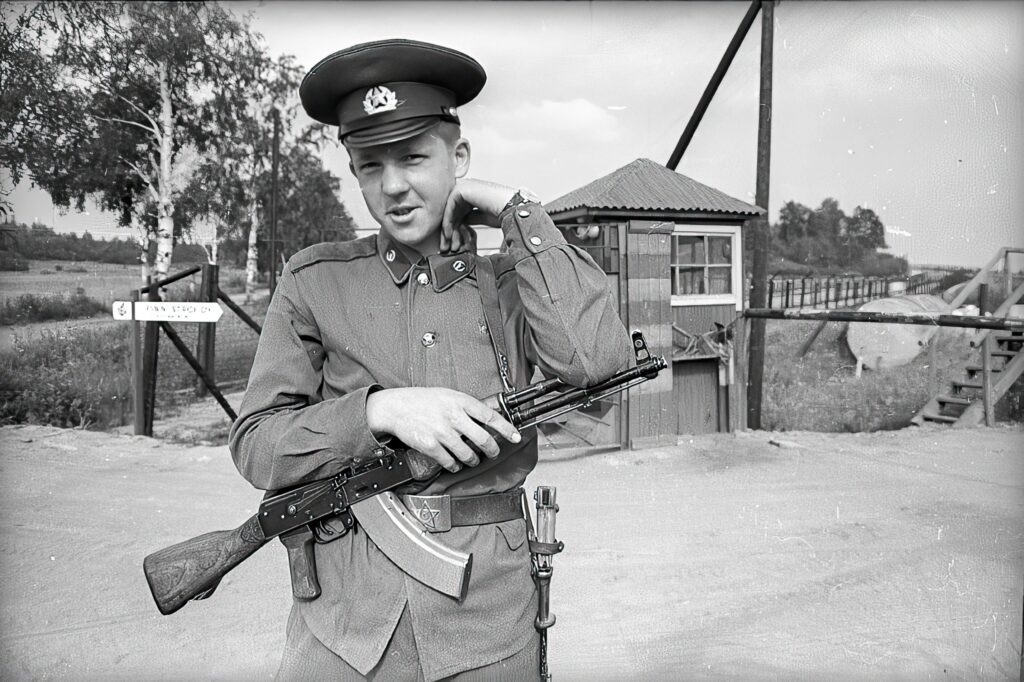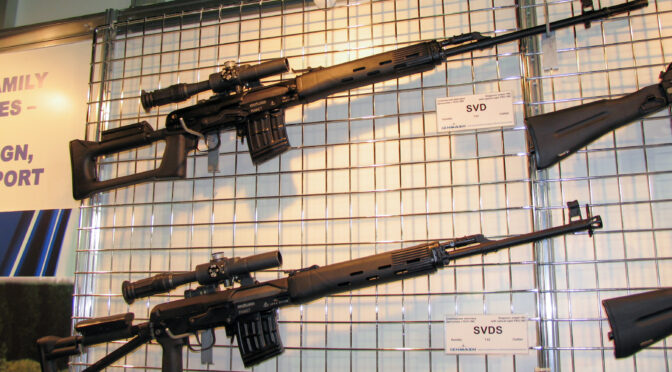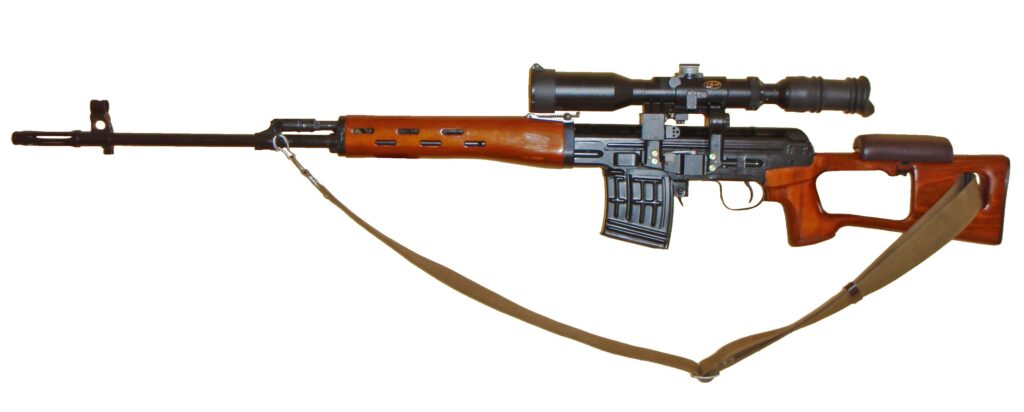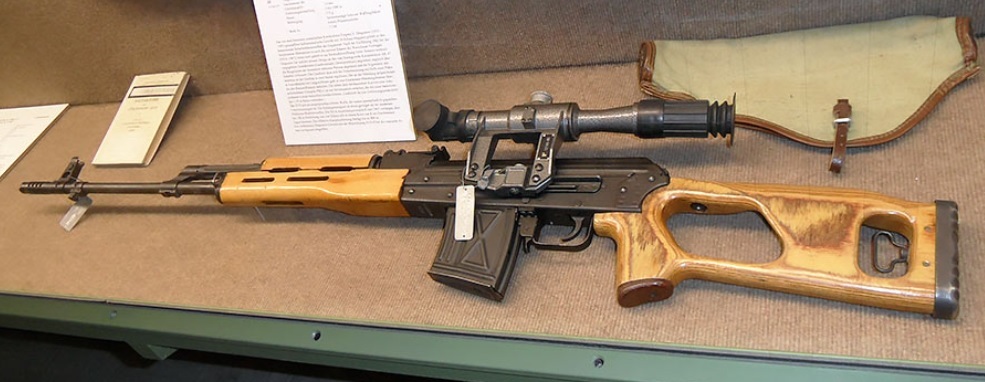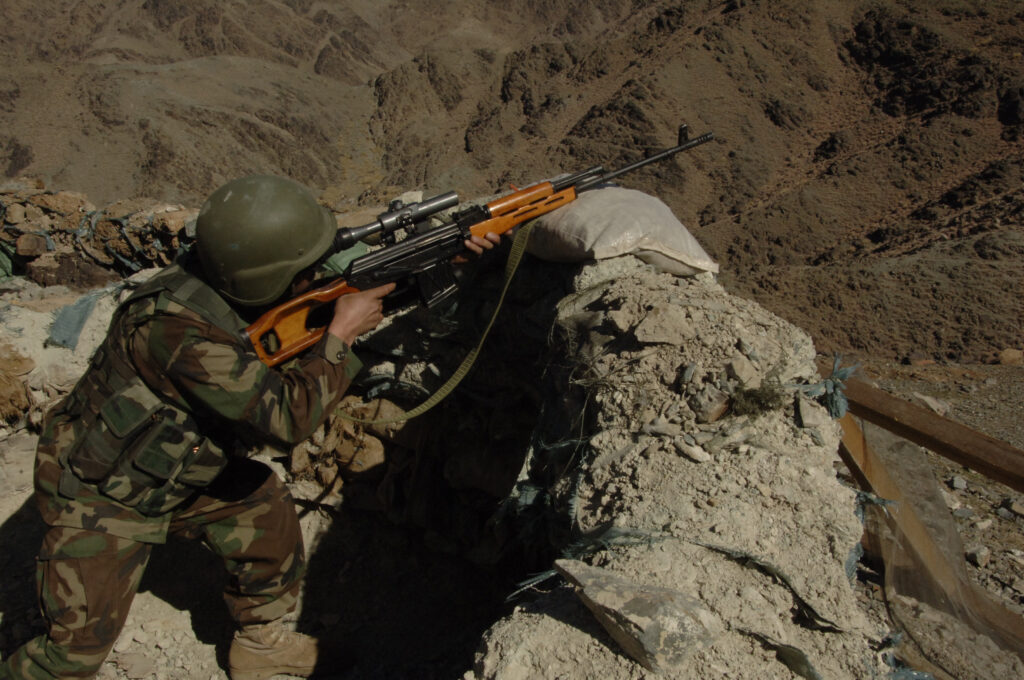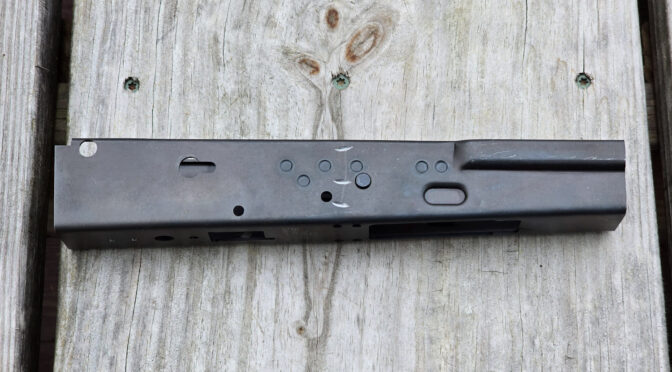The American-made AK-pattern rifle has long been an elusive prize for domestic firearms manufacturers. For decades, the U.S. civilian market has been dominated by imported rifles from former combloc nations, whose state-owned arsenals perfected the art of mass-producing the Kalashnikov. These factories, steeped in a specific manufacturing tradition, produced rifles known for their legendary reliability, a quality derived from a precise combination of material science, heat treatment, and production techniques that proved remarkably difficult to replicate. Numerous American companies have attempted to enter this market, only to falter due to a fundamental misunderstanding of the platform’s engineering requirements, often resulting in rifles that were unreliable at best and dangerously unsafe at worst. The landscape is littered with the failures of companies that tried to cut corners on critical components, substituting cheaper manufacturing processes for the proven, albeit more expensive, methods used in military production.
Into this challenging environment stepped Palmetto State Armory (PSA), a company that had already disrupted the AR-15 market with its aggressive pricing and vertically integrated business model. Their entry into the AK market was met with a predictable mix of hope and deep-seated skepticism from the firearms community. This report will argue that over the past decade, Palmetto State Armory has achieved a significant and largely successful, yet incomplete, redemption for its 7.62x39mm AK-pattern rifles. This turnaround was accomplished through a pivotal and publicly acknowledged shift in material science and manufacturing philosophy, a unique business model reliant on a robust lifetime warranty to absorb the costs of its own learning curve, and an unprecedented public feedback loop with online influencers and the broader consumer base. However, this redemption is tempered by persistent quality control inconsistencies across their product lines and a notable failure to replicate their 7.62x39mm success in non-standard calibers, revealing the ongoing maturation of their manufacturing capabilities and engineering depth. This analysis will document the initial failures, the corrective actions, and the market’s evolving perception of PSA’s ambitious Kalashnikov project.
Section 1: The Foundation of Failure – Early Generation PSA AKs (c. 2015-2018)
1.1. An Engineering Autopsy: The Critical Flaw of Cast Components
Palmetto State Armory’s initial foray into the AK market with their first-generation rifles in 2015 was a textbook example of a business decision overriding fundamental engineering principles. The company’s core mission to “arm as many Americans as possible with quality products for a reasonable price” 1 drove a strategy focused on aggressive cost reduction. To achieve a disruptive sub-$500 price point for an American-made AK, PSA made a fateful choice for the rifle’s most critical, load-bearing components: the front trunnion and bolt. Instead of using the traditional and proven method of forging, PSA opted for casting.2 From a purely financial standpoint, this decision was logical, as casting is a significantly less expensive and complex manufacturing process than hammer forging. However, from an engineering perspective, it was a catastrophic error that doomed the first-generation rifles from the outset.
The metallurgical inferiority of cast components in this specific application cannot be overstated. The AK-47’s design relies on a rotating bolt that locks into lugs machined into the front trunnion. This area contains the immense pressure of the detonating 7.62x39mm cartridge, estimated to be around 45,000 psi, and must withstand the violent impact of the bolt carrier group cycling at high speed. Forging aligns the grain structure of the steel, creating a dense, strong, and resilient part capable of absorbing these forces repeatedly over tens of thousands of rounds. Casting, in contrast, results in a more random, porous grain structure, creating a component that is inherently more brittle and susceptible to stress fractures and deformation under high-impact loads.3 As one community member aptly noted, no combloc nation ever used cast parts for these critical components, a testament to the established understanding of the material science required for the platform’s longevity and safety.3
The predictable result was widespread reports of catastrophic failures in the market. Consumers and reviewers documented early-generation PSA AKs suffering from deformed trunnions, premature and excessive wear on locking lugs, and rivets coming loose after relatively low round counts.3 The rifles quickly developed a reputation for being unsafe, with the term “hand grenade” becoming a common descriptor in online forums. In the spring of 2016, PSA attempted to address these criticisms with their Gen 2 (or GB2) model, which upgraded the trunnion and bolt to billet steel.2 While billet, machined from a solid bar of steel, is a significant improvement over cast metal, it still lacks the optimal, aligned grain structure and superior fatigue life of a true forging. This move was an incremental improvement but was ultimately insufficient to solve the core problem or repair the brand’s damaged reputation. The stigma from these early generations was so profound that it created a deep well of distrust that PSA would spend the next several years trying to overcome.3
1.2. Market Reception and Reputational Damage
The backlash from the established AK enthusiast community was immediate, brutal, and unforgiving. This community, concentrated on specialized forums like AKFiles and TheAKForum, as well as the influential /r/ak47 subreddit, serves as the gatekeeper of technical knowledge and authenticity for the Kalashnikov platform in the United States. These enthusiasts, who often build their own rifles from imported parts kits, possess a deep understanding of the platform’s mechanics and metallurgy. They quickly identified the use of cast parts as a fatal flaw and condemned the rifles.
The early PSAK was swiftly placed in the same category as other failed American AK ventures, such as those from I.O. Inc. and the early cast-trunnion rifles from Century Arms, which had a history of catastrophic failures.5 The consensus was clear: “Do Not Buy.” This sentiment spread rapidly across social media and YouTube, creating a powerful narrative that PSA was selling a dangerously subpar product. The root of this distrust ran deeper than just reports of broken rifles. It stemmed from a perception that PSA had shown a fundamental disrespect for the engineering legacy of the Kalashnikov. By choosing to use cast parts, the company signaled to the purist community that it either did not understand or did not care about the principles that made the AK reliable. This failure to adhere to the established, battle-proven manufacturing standards created a reputational deficit that would require more than just minor tweaks to overcome. It necessitated a complete philosophical shift in how the company approached the AK platform.
Section 2: The Turning Point – The Forged (GF3) Generation (c. 2018-Present)
2.1. A Strategic Pivot to Forged Components
By late 2018, Palmetto State Armory initiated what would become the most critical phase of its AK redemption arc. The launch of the PSAK-47 GF3 was not merely a product update; it was a direct and public acknowledgment of past failures and a clear statement of a new engineering philosophy. The marketing for this new rifle was a masterstroke of brand rehabilitation. By explicitly naming the new line the “GF3,” with “GF” standing for “Gen 3 Forged,” PSA immediately addressed the primary criticism that had plagued its earlier models.6 This nomenclature was a transparent signal to a skeptical market that the core issue—the use of inferior cast and billet parts—had been rectified.
The engineering significance of this change was profound. The GF3 platform was built around a hammer-forged front trunnion, a hammer-forged bolt, and a hammer-forged carrier.2 This switch to the correct manufacturing process for the rifle’s most critical, high-stress components instantly elevated the PSAK from the “do not buy” category to a potentially viable contender in the U.S. market. It demonstrated that PSA had listened to the market’s fierce criticism and invested in the proper tooling and processes to build a fundamentally sound rifle. To achieve this, PSA engaged in strategic partnerships with established American manufacturing firms, sourcing key components like the forged trunnions and bolts from respected suppliers such as Toolcraft Inc..5 This move not only ensured a higher quality of parts but also lent credibility to the new generation, as Toolcraft was already well-regarded for its work on AR-15 bolt carrier groups and other military-grade components. The GF3 was no longer just a PSA product; it was a product built with components from a trusted name in the industry, a crucial detail in rebuilding consumer confidence.
2.2. Validating the Redesign: The AK Operators Union “Torture Test”
Despite the clear engineering improvements, PSA understood that internal claims and marketing would not be enough to sway a deeply skeptical community. The company needed independent, third-party validation from a trusted but critical source. They found it in Rob Ski of the AK Operators Union, Local 47-74. Rob Ski’s YouTube channel was, and remains, one of the most respected sources for no-nonsense AK reviews, famous for its grueling 5,000-round “torture test” that simulates a high volume of hard use and exposes weaknesses in a rifle’s construction. Many rifles, including previous American-made AKs, had failed this test spectacularly.
PSA sent a production GF3 rifle to Rob Ski for evaluation, a move that was both confident and risky. The outcome was pivotal. The PSAK-47 GF3 became the first American-made AK to successfully pass the 5,000-round test.9 This event was arguably the single most important moment in the history of PSA’s AK program. It provided objective, verifiable proof from a highly credible source that the new generation, built on a foundation of forged parts, was fundamentally sound and durable. The video of the test, which documented the rifle’s performance round after round, effectively nullified the primary argument of PSA’s detractors: that the rifles were inherently fragile and would inevitably fail.
The impact on the market narrative was immediate and transformative. While hardcore purists remained skeptical, the conversation was forced to shift. The debate was no longer about if the rifle would catastrophically fail, but rather about more nuanced aspects like long-term wear, consistency of quality control, and its value relative to imported rifles.5 Rob Ski’s validation gave countless potential buyers the confidence to consider a PSAK for the first time, establishing the GF3 as the new baseline for a viable, budget-friendly American AK and successfully resetting the company’s reputation within the Kalashnikov community.
Section 3: The Pursuit of Parity – Post-GF3 Refinements and Challenges
With the GF3 establishing a new foundation of credibility, Palmetto State Armory did not rest on its laurels. The company embarked on a strategy of iterative improvement and product line diversification, aiming to move its AK offerings from merely “good enough” to being directly competitive with respected imported rifles. This phase of their evolution, however, also exposed the limits of their manufacturing maturity and revealed persistent challenges in quality control and engineering depth.
3.1. Enhancing the Platform: Moving Beyond “Good Enough”
The most significant area of post-GF3 improvement was the barrel. While the GF3’s standard nitrided 4150 steel barrel, made by DC Machine, was perfectly adequate and passed the 5,000-round test, PSA sought to compete on a higher level.2 This led to the introduction of the GF4 series, which featured a PSA-made Cold Hammer Forged (CHF) chrome-lined barrel.2 The pinnacle of this evolution came with the GF5 and premium AK-103 models, which boasted barrels made by FN Herstal in South Carolina. These barrels are not only cold hammer forged and chrome-lined but are also made from the same “machine gun steel” used in FN’s military M249 machine guns, offering exceptional durability and barrel life.1 This strategic move to incorporate FN barrels was a clear signal that PSA was targeting the higher end of the market, aiming for parity with the highly-regarded barrels found on combloc imports.
Beyond the barrel, PSA enhanced its rifles with superior components. The inclusion of the ALG Defense AKT trigger, either as a standard feature or an available upgrade on models like the AK-E and GF5, was a major selling point.2 The ALG trigger provides a much smoother, cleaner pull than a standard AK trigger, appealing directly to shooters accustomed to the refined triggers of the AR-15 platform.9 Metallurgically, PSA continued to make subtle but important improvements, upgrading the front trunnions on later models like the AK-E, GF4, and GF5 to a 4340 “aircraft quality” hammer-forged steel, offering even greater strength and durability.2
Simultaneously, PSA dramatically expanded its AK product line to capture every conceivable niche. This diversification included the AK-P, a compact pistol variant; the highly popular AK-V, a 9mm pistol-caliber carbine that is not a Vityaz clone but uses CZ Scorpion magazines; and an ambitious line of “100-series” clones, including the AK-103 (7.62x39mm), AK-104 (short 7.62x39mm), AK-101 (5.56mm), AK-102 (short 5.56mm), and the AK-74 (5.45x39mm).2 This rapid expansion demonstrated a clear strategy to become a one-stop shop for American-made Kalashnikov-style firearms.
3.2. Persistent Gremlins and Strategic Overreach
Despite these impressive advancements, PSA’s journey has been marked by persistent quality control issues and significant product failures, indicating that its manufacturing processes have not yet reached full maturity. One of the most prominent and recurring problems has been with their firing pins. Across multiple generations, including the well-regarded GF3 and GF5, there have been consistent reports of firing pins peening, breaking, or having their retaining pins fall out during use.1 This specific issue, sometimes leading to pierced primers, points to a lingering flaw in either the component’s design, material, heat treatment, or the dimensions of the firing pin channel in the bolt.
| Note: There is now a GF5E version – the “E” likely stands for enhanced given PSA’s past naming conventions. This indicates PSA has already further refined their design but the product is too new to factor into this report. |
More critically, PSA’s attempt to expand beyond the standard 7.62x39mm AKM has been, by most accounts, a failure in its initial stages. This represents a case of strategic overreach, where the company’s rapid product development outpaced its engineering capabilities. The launch of their AK-74 (5.45x39mm) and their 5.56mm rifles (AK-101 and AK-102) was plagued with significant reliability problems. Users and prominent reviewers documented widespread issues, including failures to feed, failures to extract, and improper gassing.16 These problems suggest that PSA did not adequately re-engineer the platform for the unique pressure curves, case tapers, and dimensions of the 5.45mm and 5.56mm cartridges. While they had successfully reverse-engineered and mass-produced the standard AKM, they failed to properly adapt the gas port size, bolt geometry, and extractor design for these different calibers, resulting in unreliable products that further damaged their reputation in those specific market segments.
Other quality control “gremlins” continue to surface, indicating ongoing inconsistency. Many PSA AKs are known to be significantly overgassed, even for an AK, which leads to violent ejection that can damage brass casings and cause premature wear on the rear trunnion and bolt carrier.10 Reports of non-concentric muzzle threads, which can cause catastrophic baffle strikes when using a suppressor, have also been common, though PSA’s warranty service has been noted to correct this issue when reported.20 Finally, minor issues like canted front sight blocks and inconsistent magazine well dimensions that require fitting for certain magazines still appear, reinforcing the perception that while the core components are now sound, the final assembly and quality assurance processes can be a lottery.8
Section 4: The Verdict of the Market – Consumer Sentiment and Competitive Positioning
The ultimate measure of Palmetto State Armory’s redemption arc lies in the court of public opinion and its standing within the competitive landscape of the U.S. civilian firearms market. The conversation surrounding PSA’s AKs has evolved from outright condemnation to a nuanced and often heated debate, positioning their rifles as a central figure in the purchasing decisions of thousands of American buyers.
4.1. The Great Debate: PSA vs. The Imports
For the modern American consumer looking to purchase an AK-pattern rifle, the primary decision often boils down to a choice between PSA’s domestic offerings and the established imported rifles, chiefly the Romanian WASR-10 and the Serbian Zastava ZPAP M70. This comparison represents the central conflict in the mid-tier AK market, pitting American manufacturing, modern features, and a lifetime warranty against the proven military heritage and rugged reputation of combloc imports. The following table provides a structured analysis of these key competitors, codifying the trade-offs that buyers must weigh.
| Metric | PSA GF5 | Cugir WASR-10 | Zastava ZPAP M70 |
| Key Components | Hammer Forged Trunnion, Bolt, & Carrier 2 | Hammer Forged Trunnion, Bolt, & Carrier 22 | Hammer Forged, Bulged Trunnion; 1.5mm Receiver 23 |
| Fit & Finish | Generally good; straight sights are common 1 | Historically rough; potential for canted sights & mag well issues 22 | Generally good; robust, heavy feel 23 |
| Barrel | FN CHF Chrome-Lined “Machine Gun Steel” 2 | Cugir CHF Chrome-Lined 22 | Zastava CHF (non-chrome-lined in most modern imports) 23 |
| Aftermarket | Standard AKM Pattern 26 | Standard AKM Pattern 15 | Yugo Pattern (non-standard furniture) 23 |
| Common QC Issues | Firing pin problems; overgassing; some assembly errors 12 | Canted sights; rough machining; magazine wobble 25 | Historically solid; some recent QC complaints but generally well-regarded 28 |
| Warranty | Lifetime, transferable 1 | Importer-dependent, typically limited (1-year) | Importer-dependent, generally good customer service reputation 28 |
| Typical Price | ~$1,000 – $1,150 19 | ~$900 – $1,000 22 | ~$1,000 – $1,100 22 |
This comparative analysis reveals a complex value proposition. The PSA GF5 offers a superior barrel and often better out-of-the-box fit and finish compared to a WASR-10, backed by an unbeatable lifetime warranty. However, it competes in the same price bracket as the Zastava ZPAP M70, a rifle lauded for its robust, military-derived construction with a thicker receiver and bulged trunnion, though it lacks a chrome-lined barrel and uses non-standard furniture. The WASR-10 remains the quintessential rugged, no-frills workhorse; what it lacks in refinement, it makes up for in its proven track record of combloc reliability.25 Ultimately, the choice depends on the buyer’s priorities: the feature-rich, warranty-backed American option (PSA), the battle-proven but rough import (WASR), or the heavy-duty, unique-pattern import (Zastava).
4.2. The Digital Battlefield: Purists vs. Pragmatists
The online discourse surrounding PSA AKs is sharply divided into two main camps, reflecting a fundamental philosophical split in the gun community. The first camp consists of the “AK Purists.” These enthusiasts populate forums like /r/ak47 and AKFiles and place the highest value on military provenance and combloc factory heritage. For them, a true AK is one built in a factory with a military lineage, like Cugir in Romania or Zastava in Serbia. They view any American-made AK with inherent suspicion, often arguing that U.S. companies cannot replicate the specific heat treatments, riveting techniques, and institutional knowledge of these legacy arsenals. To this group, a PSAK, regardless of its components, is a “clone” or “copy” that lacks the “soul” of a real Kalashnikov. As one user humorously but accurately summarized their perspective, if a rifle “wasn’t made by a Slavic surf using antique equipment with a gun to the back of his head they are going to call it garbage no matter what”.4
The second camp is composed of the “PSA Pragmatists.” This growing contingent of consumers is less concerned with provenance and more focused on value, features, and customer support. They are drawn to PSA’s aggressive pricing, the availability of rifles with modern, factory-installed furniture and accessories, and the fact that the rifles are made in the United States.1 The single most important factor for this group, however, is PSA’s lifetime warranty.24 This warranty functions as a critical component of PSA’s business strategy. It effectively de-risks the purchase for the consumer. The pragmatist acknowledges the possibility of receiving a rifle with QC issues but sees it as an acceptable risk because the cost of correction is borne entirely by the company. The ability to “send it back” and have it fixed or replaced for free creates immense brand loyalty and serves as a powerful counterargument to the purist’s mantra of “buy an import that works perfectly out of the box”.17 For many, the peace of mind offered by the warranty outweighs the allure of foreign military heritage.
4.3. The Influencer Effect: Public Accountability and Validation
In the modern firearms market, YouTube and social media influencers wield significant power in shaping consumer perception. Palmetto State Armory has demonstrated a uniquely modern and effective approach to engaging with this reality, using public criticism as an opportunity for transparent brand building. The most salient example of this was the company’s response to a 2021 video by the highly influential reviewer Garand Thumb, which exposed significant premature wear on the trunnion and bolt of a new PSA AK-74, as well as firing pin issues.26
A negative review of this magnitude from a top-tier influencer could have been a public relations disaster. However, PSA’s response was a case study in effective corporate communications in the digital age. Instead of ignoring the criticism, becoming defensive, or attempting to discredit the reviewer, PSA publicly acknowledged the issues. They contacted Garand Thumb, brought the specific rifle back to their facility for a full engineering and metallurgical analysis, and documented the entire process for the public.32 They released videos featuring their own engineers explaining their findings, admitting to out-of-spec components, and detailing the corrective actions they were implementing in their production line.33
This act of radical transparency had a profound impact on brand perception. By openly engaging with a major product failure, PSA turned a potential catastrophe into a demonstration of their commitment to product improvement and customer satisfaction. It reinforced the narrative that they are a company that listens to the market and is willing to learn and adapt in public. This approach stands in stark contrast to other companies in the industry that have been known to ignore or deny product issues. This “influencer feedback loop”—where public testing leads to public acknowledgment and documented improvement—has become a cornerstone of their relationship with the community and has done more to build trust than any traditional advertising campaign could have achieved.
Section 5: Analyst’s Conclusion and Future Outlook
After a decade of development, iteration, and public scrutiny, Palmetto State Armory’s journey in the AK market represents one of the most compelling stories in modern American firearms manufacturing. The company has navigated a treacherous path from producing fundamentally flawed rifles to offering a product line that is now a dominant force in the U.S. market. The redemption arc, however, is not a simple, completed story but a complex and ongoing process with clear successes and notable shortcomings.
5.1. The Redemption Arc Assessed: A Qualified Success
The redemption of Palmetto State Armory’s core 7.62x39mm rifle line—encompassing the GF3, GF4, and GF5 models—is an undeniable and significant achievement. The company successfully identified its initial, critical engineering failure (the use of cast components) and systematically corrected it by investing in the proper material science and manufacturing processes (hammer-forged trunnions, bolts, and carriers). This foundational change, validated by rigorous third-party testing, transformed their rifles from a market liability into a credible and competitive product. The subsequent evolution, incorporating high-quality, domestically sourced components like FN barrels and ALG triggers, demonstrates a clear ambition to compete not just on price, but on quality and features.
However, this success must be qualified. The redemption arc is not yet complete and has not been uniform across their entire AK portfolio. The persistence of certain quality control issues, such as the recurring firing pin problems and inconsistent gassing, indicates that while the core design is now sound, the mass-production and assembly processes have not yet achieved the level of consistency seen in legacy combloc factories. More telling is the profound failure of their initial forays into 5.45x39mm and 5.56mm platforms. These product launches were marred by fundamental reliability issues, revealing a critical gap in the company’s research and development capabilities. PSA has mastered the reverse-engineering and production of the standard AKM, but they remain students of its more esoteric and dimensionally sensitive variants. The “PSA AK” is therefore not a monolith; it is a brand whose reliability is, for now, largely caliber-specific.
| Brand | Model(s) | Year | Total Mentions | Positive % | Negative % | Neutral % | Key Positive Drivers | Key Negative Drivers |
| Palmetto State Armory | GF3 | 2020 | 3,500 | 65% | 25% | 10% | Forged Trunnion, Price | QC, Skepticism, Gen2 Legacy |
| GF3/GF4 | 2021 | 5,000 | 75% | 18% | 7% | Reliability Reports, Value | Firing Pin Issues, Mag Fit | |
| GF5/AK-103 | 2022 | 7,500 | 80% | 15% | 5% | FN Barrel, Features, Warranty | QC Lemons, 5.45 Issues | |
| All Models | 2023 | 9,000 | 82% | 14% | 4% | Market Dominance, Variety | QC, Firing Pin Complaints | |
| All Models | 2024 | 11,000 | 85% | 12% | 3% | Proven Track Record, Price | QC, Complex Product Line | |
| All Models | 2025 (YTD) | 6,500 | 86% | 11% | 3% | Availability, Value | N/A |
5.2. Strategic Recommendations for the U.S. Civilian Buyer
Based on this comprehensive analysis, the following strategic recommendations can be made for prospective buyers, segmented by their needs and priorities:
- For the First-Time AK Buyer on a Budget: A Palmetto State Armory PSAK-47 GF3 is a highly viable and recommended entry point into the AK platform. It offers the best combination of modern features, acceptable quality, and value for its price point in the current market.22 The buyer should proceed with the understanding that while the rifle is fundamentally sound, the possibility of minor QC issues exists, and the robust lifetime warranty may need to be utilized.
- For the “Buy Once, Cry Once” / Hard-Use Seeker: For those prioritizing maximum out-of-the-box reliability and long-term durability for a duty or “go-to” rifle, an imported firearm from a proven military factory remains the superior choice. GF4 and GF5 rifles are viewed positively but there are reports of reliability issues with them. For example, overgassing with the GF5s. A Serbian Zastava ZPAP M70, a Polish WBP Jack, or a Bulgarian Arsenal SAM7 series rifle offers a higher probability of flawless performance and construction, reflecting decades of manufacturing refinement.22 This peace of mind comes at a slightly higher price and potentially with fewer modern features or non-standard parts compatibility. This recommendation may change as PSA continues to improve their offerings.
- For the Tinkerer and Modernizer: PSA’s AK offerings present an excellent base platform for customization. Their adherence to the standard AKM pattern for furniture and their wide array of factory configurations—including models with advanced M-LOK handguards, railed gas tubes, and upgraded triggers—make them an ideal choice for the shooter who intends to build a personalized, modern Kalashnikov.9
- For Buyers of Non-7.62x39mm AKs: A strong recommendation to exercise extreme caution when considering PSA’s current 5.45x39mm and 5.56mm offerings. Given the documented history of reliability issues, potential buyers should either wait for future generations of these rifles that are improved or opt for established imported alternatives from manufacturers with a track record in these specific calibers.
5.3. Future Projections: The Path Forward for PSA
Palmetto State Armory has successfully carved out and solidified its position as the undisputed king of the budget-tier American AK market. For a new generation of gun owners, PSA is the de facto entry point to the Kalashnikov platform.1 This position gives them immense market influence and a significant strategic advantage. In the volatile world of American firearms policy, the perennial threat of new restrictions on imported firearms looms large. Should such a ban be enacted, PSA would instantly be elevated from a budget leader to the dominant force in the entire U.S. AK market, a contingency that undoubtedly informs their long-term strategy.
The path forward for Palmetto State Armory involves two primary challenges that will define the next chapter of their story. The first is to achieve process maturity. They must standardize their quality control and assembly procedures to reduce the defect rate and lessen their reliance on the lifetime warranty as a backstop for production inconsistencies. The goal should be to make the warranty an exception, not an expected part of the ownership experience.
The second, and more difficult, challenge is to achieve engineering mastery. They must successfully apply the hard-won lessons from their 7.62x39mm program to finally develop and produce reliable, durable, and properly engineered rifles in 5.45mm, 5.56mm, and any other future caliber they pursue.
Successfully meeting these two challenges will mark the true completion of their redemption arc and solidify their legacy as the company that finally, and successfully, brought the Kalashnikov home to American manufacturing.
If you find this post useful, please share the link on Facebook, with your friends, etc. Your support is much appreciated and if you have any feedback, please email me at in**@*********ps.com. Please note that for links to other websites, I may be paid via an affiliate program such as Avantlink, Impact, Amazon and eBay.
Works cited
- Palmetto State Armory AK-47 : r/guns – Reddit, accessed July 20, 2025, https://www.reddit.com/r/guns/comments/1ercb8x/palmetto_state_armory_ak47/
- The Official Guide to the Generations of the PSA AK Series of …, accessed July 20, 2025, https://palmettostatearmory.com/forum/t/the-official-guide-to-the-generations-of-the-psa-ak-series-of-firearms/3035
- What’s the consensus on the PSA AK’s? : r/guns – Reddit, accessed July 20, 2025, https://www.reddit.com/r/guns/comments/7kkzoj/whats_the_consensus_on_the_psa_aks/
- Why do psa ak’s get so much hate : r/PalmettoStateArms – Reddit, accessed July 20, 2025, https://www.reddit.com/r/PalmettoStateArms/comments/1hds84d/why_do_psa_aks_get_so_much_hate/
- PSAK47 GF5 or GF3? : r/guns – Reddit, accessed July 20, 2025, https://www.reddit.com/r/guns/comments/t0fax7/psak47_gf5_or_gf3/
- PSAK-47 GF3 – FishGame – Texas Fish & Game, accessed July 20, 2025, https://fishgame.com/2019/04/psak-47-gf3/
- PSAK-47 GF3 Rifles | Palmetto State Armory, accessed July 20, 2025, https://palmettostatearmory.com/ak-47/psak-47-gf-series/psak-47.html
- Review: Palmetto State Armory AK-103 | An Official Journal Of The NRA, accessed July 20, 2025, https://www.americanrifleman.org/content/review-palmetto-state-armory-ak-103/
- PSAK 47 GF3 Review: Field Tested – Gun University, accessed July 20, 2025, https://gununiversity.com/psa-ak-gf3-review/
- My new Palmetto AK-47 GF4. First ever AK, and I’m happy with this purchase. (Disclaimer – commie LARP is purely ironic) : r/guns – Reddit, accessed July 20, 2025, https://www.reddit.com/r/guns/comments/sjxbcx/my_new_palmetto_ak47_gf4_first_ever_ak_and_im/
- PSA AK-103 Review | Custom Build using the AK-103 Base, accessed July 20, 2025, https://lynxdefense.com/reviews/psa-ak-103/
- Problem with PSAK Rivets? – Page 4 – AK-47 / AK-74 – Palmetto State Armory | Forum, accessed July 20, 2025, https://palmettostatearmory.com/forum/t/problem-with-psak-rivets/30814?page=4
- Problem with PSAK Rivets? – Page 2 – AK-47 / AK-74 – Palmetto …, accessed July 20, 2025, https://palmettostatearmory.com/forum/t/problem-with-psak-rivets/30814?page=2
- Century arms wasr vs psa gf3 : r/Firearms – Reddit, accessed July 20, 2025, https://www.reddit.com/r/Firearms/comments/ktxtpe/century_arms_wasr_vs_psa_gf3/
- Century WASR vs PSAK G3/4 : r/guns – Reddit, accessed July 20, 2025, https://www.reddit.com/r/guns/comments/p6a81i/century_wasr_vs_psak_g34/
- Ak 102 failure to feed and extract – AK-47 / AK-74 – Palmetto State …, accessed July 20, 2025, https://palmettostatearmory.com/forum/t/ak-102-failure-to-feed-and-extract/21318
- Ak 5.56 issues – AK-47 / AK-74 – Palmetto State Armory | Forum, accessed July 20, 2025, https://palmettostatearmory.com/forum/t/ak-5-56-issues/16881
- Are gf5 aks from psa worth the money? : r/PalmettoStateArms – Reddit, accessed July 20, 2025, https://www.reddit.com/r/PalmettoStateArms/comments/18ckvxq/are_gf5_aks_from_psa_worth_the_money/
- My experience with my PSAK-47 GF5 after 1250ish rounds: It’s Good….. Now : r/PalmettoStateArms – Reddit, accessed July 20, 2025, https://www.reddit.com/r/PalmettoStateArms/comments/1li5xgz/my_experience_with_my_psak47_gf5_after_1250ish/
- Thumbs up to PSA for a great CS experience. : r/guns – Reddit, accessed July 20, 2025, https://www.reddit.com/r/guns/comments/k8xrhd/thumbs_up_to_psa_for_a_great_cs_experience/
- PSAK-GF3 issues – AK-47 / AK-74 – Palmetto State Armory | Forum, accessed July 20, 2025, https://palmettostatearmory.com/forum/t/psak-gf3-issues/10890
- Best AK-47 Buyer’s Guide [Field Tested] – Gun Digest, accessed July 20, 2025, https://gundigest.com/rifles/the-best-ak-47-rifles-you-can-find-in-the-u-s
- Zastava M70 vs. AK-47: Key Differences – AR15Discounts, accessed July 20, 2025, https://ar15discounts.com/zastava-m70-vs-ak-47-key-differences/
- Is the price difference worth it between the GF3 and WASR? : r …, accessed July 20, 2025, https://www.reddit.com/r/PalmettoStateArms/comments/12coe9a/is_the_price_difference_worth_it_between_the_gf3/
- Best AK-47 Rifles [Tested] – Pew Pew Tactical, accessed July 20, 2025, https://www.pewpewtactical.com/best-ak-47/
- PSA AK-74 Review: American-Made Russian Thunder – Gun Digest, accessed July 20, 2025, https://gundigest.com/gun-reviews/military-firearms-reviews/psa-ak-74-review
- Quick Newbie Question about PSA AK : r/NoobGunOwners – Reddit, accessed July 20, 2025, https://www.reddit.com/r/NoobGunOwners/comments/144mcy1/quick_newbie_question_about_psa_ak/
- Hello I was looking into getting an AK does anyone have recommendations for manufacturers or what type of model to get. I was think about a PSA AK but I am not sure if there quality. I have also heard good things about Zastava. : r/liberalgunowners – Reddit, accessed July 20, 2025, https://www.reddit.com/r/liberalgunowners/comments/s9iv1f/hello_i_was_looking_into_getting_an_ak_does/
- PSA AK47’s : r/PalmettoStateArms – Reddit, accessed July 20, 2025, https://www.reddit.com/r/PalmettoStateArms/comments/18k6lln/psa_ak47s/
- The 6 Best AK Rifles of 2025 (Tested) – Core Vision Training, accessed July 20, 2025, https://www.corevision-training.com/blog/best-ak-47-rifles
- Garand Thumb’s PSA AK-74 Test Results | Palmetto State Armory, accessed July 20, 2025, https://palmettostatearmory.com/blog/garand-thumbs-psa-ak-74-test-results.html
- PSA Youtube Videos | Palmetto State Armory, accessed July 20, 2025, https://palmettostatearmory.com/blog/category/psa-youtube-videos.html?p=10
- GARAND THUMB’S PSA AK-74 TEST RESULTS – YouTube, accessed July 20, 2025, https://www.youtube.com/watch?v=snf9hrMHgUs



